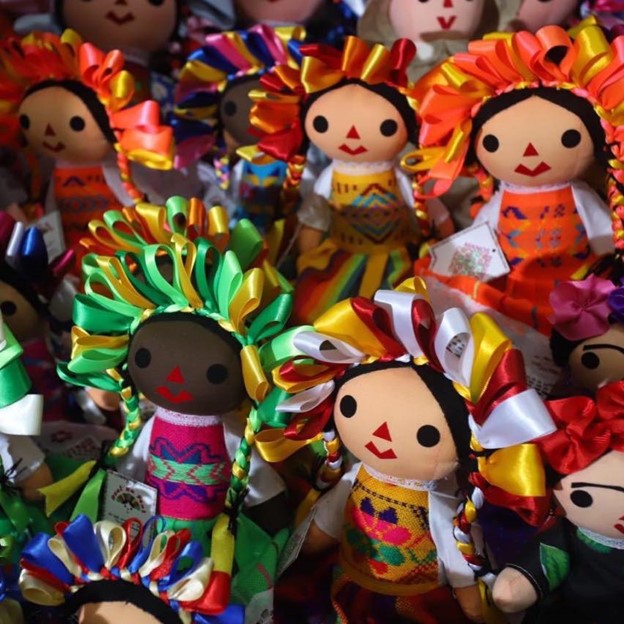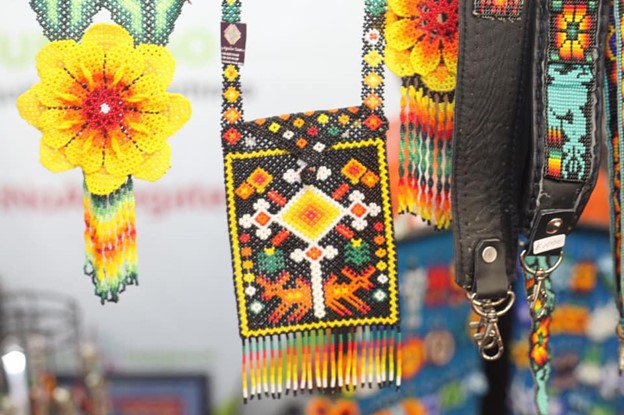
The gold rush in the Yukon began as suddenly as it ended. Cities like Dawson City and Skagway began to decline rapidly. Many small structures disappear completely within a few days. Considered by many to be the last grand adventure of the 19th century, it has also left behind a gruesome experience.
The Klondike Gold Rush had a devastating impact on the local environment, leaving the ‘Sons of the Land’ indigenous peoples under severe threat, including massive soil erosion, water pollution, deforestation and loss of native wildlife.
About 100,000 prospectors made the initial journey to the Yukon-Klondike region, but only 30,000 actually successfully completed the journey. That is, about 70,000 prospectors either lost their lives or returned empty-handed from the Klondike gold panning.
The Bhumiputras (natives) suffered the most. For them, the gold rush meant a drastic reduction in their own sport and recreation, including moose, caribou and fish. The arrival of a large number of foreigners, set the western stage alight. Prospectors hunted all for food. In many areas, gold mining nearly destroyed salmon populations. Resh was also left with the effects of alcoholism and disease from contact with white men. Before the 1896 Gold Rush, indigenous communities lived in harmony with this land for centuries. The impact of the gold rush on the indigenous peoples of the region was extremely harsh and intense. People from various tribal groups prospered in the short term by acting as guides or packers for foreigners and selling food and supplies to prospectors. In the long term, the indigenous people living in the Klondike region suffered greatly from the environmental damage of gold mining, especially in rivers and forests, as well as the creation of Dawson. Those who fished at the Dawson site experienced chaos and displacement, as gold prospectors took their place. Declining wildlife populations disrupted native livelihoods, and foreign hunters and fishermen who remained in the Yukon after the gold rush took over those resources. Competition began with natives for certain fishing spots and for the right to sell food to the miners. Contaminated water supplies and smallpox led to disastrously long days even after the tribals retreated to their reserves. Although they initially found few ways to benefit economically from the gold rush, their fishing and hunting grounds were largely destroyed.

Three years after the excitement of the gold rush, while most prospectors moved on—the thirst for gold rush stories has influenced many writers, journalists and philosophers, from Jack London to the poet Robert Service to Pierre Burton to Charlotte Grey, and continues to this day. has
In 2010, renowned Canadian historian Charlotte Gray published Gold Diggers: Striking It Rich in the Klondike. In the book, he recounts the Yukon experience, the celebration of the Gold Rush, some tragic dramas, stories of successful gold prospectors and glamorous Western entertainment of the time, but there was also a history of deprivation that we have ignored or denied. But today we understand that the Klondike Gold Rush Our account was out of balance.
First, Canadian history textbooks have always focused on foreign settlers. We have ignored, denigrated, or challenged the stories of the indigenous people who lived on this land for thousands of years before Europeans arrived. Former Senator Murray Sinclair, who headed Canada’s Truth and Reconciliation Commission, said, “We need to change the way we educate children. Aboriginal and non-Aboriginal, all of them must grow up and be educated in Canada with a fuller and more accurate knowledge of this country’s history.” That is, there must be a much more thorough and respectful inclusion of Aboriginal history.
A second place is a greater focus on environmental history and the study of human interaction with the natural world. Climate change forces us to rethink our colonial assumptions. Earth’s resources are not unlimited, but we have been exploited. So, in the words of radical young climate activist Greta Thunberg, “Our house is on fire.” If we want to prevent the planet from becoming uninhabitable, we need to develop a more holistic approach. “Respect for Indigenous rights is a key value to combating climate change,” said Dana Tja-Tram, Chief of the Old Crow, Yukon First Nation, at the 2018 Global Climate Action Summit. Neglect of our people is neglect of the planet.”
Charlotte Gray says, “I now realize that the Gold Rush story is incomplete without these two perspectives. I would like to re-establish the central role of Aboriginal people in the events of the Klondike River in the 1890s. Even the river’s name is a colonial corruption of a much older name — ‘Trondek’, the name of the First Nations who inhabited the region for thousands of years. The then Trondek Chief ‘Isaac’ played an important role in the Gold Rush but has been sidelined in the conventional narrative.
According to archaeologists, First Nations people have lived in the northern region known as the Yukon for thousands of years. By the 1890s they were largely oblivious to the Dominion of Canada government in Ottawa and the border with the United States. whose combined population was about five thousand; It was their traditional territory, a homeland rich in resources including sports, fishing and berry picking. The European concept of land ownership was meaningless to them; They belonged to the land, lived in harmony with its rhythms, and recognized the interdependence of all living beings. These people were overlooked despite playing an important role in the gold rush as hunters, porters and traders.
Library and Archives Canada (C-005389) mentions:
The gold rushers and their historians, especially early on, chose to describe, as Jack London put it, a treacherous, empty land – “a few hundred thousand square miles frozen.” Their only epic effort was to pick up the precious yellow metal from the ground. They were largely indifferent, though not overtly hostile, to indigenous peoples and equally indifferent to the damage to the Yukon Ecosystem. Their conquest mentality dominates popular accounts of the Gold Rush, and the gold rush dominates Yukon history. “It’s like an unwanted myth,” says Joseph Tsiga. who is a multidisciplinary artist of the Kaska Dene First Nation, as the Kaska people are now called. “Anyone interested in the values of reunification, cultural assimilation, and inclusion can change the Yukon’s ‘gold rush’ identity in the future.”
When Charlotte Gray began researching the book ‘Gold Diggers’ in 2005, she wanted to find someone who could truly narrate the Aboriginal experience. But unable to find such written primary sources, he had to rely on: diaries, letters, and journals. Although he tries to cover the story of the indigenous people of the land at large in the book, it remains in the background rather than the foreground.
It is worth noting that indigenous oral histories and their sources were available, but Charlotte was not aware of them, especially those passed down by the local Han-speaking people, and known today as Tr’ondek Houch’in. whose traditional territory became Dawson City. The second was to focus on Chief Isaac, the charismatic Tr’ondek Hwach’in leader, with the help of local newspapers of the time. However Charlotte admits she didn’t understand or know in time, and regrets it. He therefore wants to avoid repeating the mistakes of colonial narratives, which excluded the Yukon’s native peoples.
Dawson Museum Archives 1998.22.598:
Chief Isaac, who became the Tr’ondek Hoach’in chief before the gold rush, was a tall, elegant man with a friendly smile and a friendly smile. His aboriginal name has been lost from history. The name “Isaac” was given to him by the Anglican bishop William Bompus, and archival sources usually refer to him as “Chief Isaac”. An April 15, 1932 Alaska Weekly mention of Mahaprayan described him as “taller, muscular, single-bodied and mentally rich” than normal. This great personality was none other than the tribal chief Isaac.
A man in a hat with two feathers on the front has a striped blanket around his shoulders. The photo is edited so that the background has a yellow tint.
Chief Isaac, Dawson City, during Yukon Gold Discovery Day celebrations, 1920
Library and Archives Canada / Edward Martin Kindle Collection / E011303081-029_S4 :
Isaac was born in 1847, married to a woman named Eliza Harper, they had a daughter named Patricia, known as “Princess Patricia” because she was the daughter of a chief. Chief Isaac’s granddaughter Joy Isaac recalled that he was “a good medicine man”, respected by his family and his people among the Aboriginal people for his healing and hunting skills.
Joy Isaac and her relatives recently created a website in memory of Chief Isaac. There they described how their ancestors were hunters and gatherers, their relationship with land, water, animals and air was connected and dependent. For centuries they moved with the seasons, spending each fall gathering berries, each winter hunting and each summer fishing for salmon on the Yukon Plains, where a special salmon-rich tributary flowed into the Yukon River.
Negotiating with NWMP (North-West Mounted Police) Inspector Charles Constantine, Chief Isaac led his men five kilometers downriver from Dawson City Yukon, where they built the village of Moose-Hide, in 1902.
Black and white photo of a row of six log cabins in front of a snowy mountain.
Aboriginal village five kilometers from the Yukon, 1902
Glenbow Archives NA-2703-2 :
As hundreds of gold prospectors and their followers began to travel up the Yukon River daily, a painful transition was inevitable for the indigenous Tr’ondek Hoa’in. They struggled to learn English and communicate with the newcomers, as foreigners were bored learning the local language, Han. Notably, these people from the south encroached on their fishing grounds, clearing forests for firewood and eroding riverside land. doing
Still, Chief Isaac protected his people. He rejected many suggestions from the police, such as isolating Tr’ondek Wha’in families on islands in the middle of the Yukon River. Instead, he led his men five kilometers downriver to a site called Moose-Hide Village.
There, the Huach’in tribe continued to live on the land for decades, but their stories were celebrated with various festivals.
Chief Isaac was polite to the newcomers, rejecting their attitude toward his people and their territory. Three local newspapers – the Klondike Nugget, the Dawson Daily News and the Yukon Sun – were used to convey important messages. He noted that the justice system was harsher on Aboriginal criminals than on whites. Readers are often reminded that non-indigenous people have disrupted the delicate ecological balance that existed in the region before the gold rush. The Tr’ondek Huachin people welcomed the gold rushers, but nearly destroyed their own way of life in the process.
Gray’s 2010 book, Gold Diggers, lacks much of the above history, but, he says, “must be an inclusive history, we’re moving that way.” Charlotte Gray is a former chair of the National History Society of Canada and winner of the Pierre Barton Award, she recently won a Libraries and Archives Foundation Scholar Award. Gray lives in Ottawa and is an associate professor of history at Carleton University.
